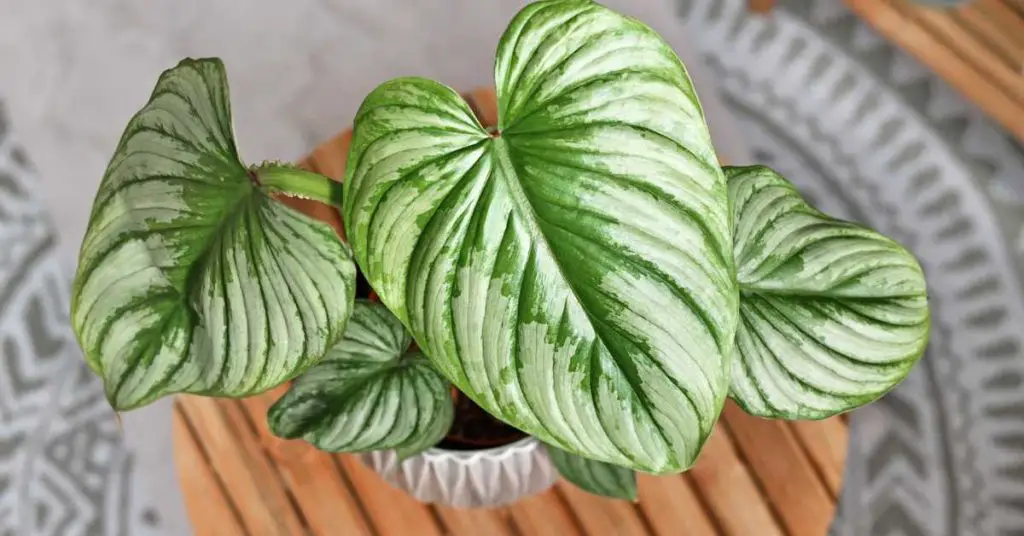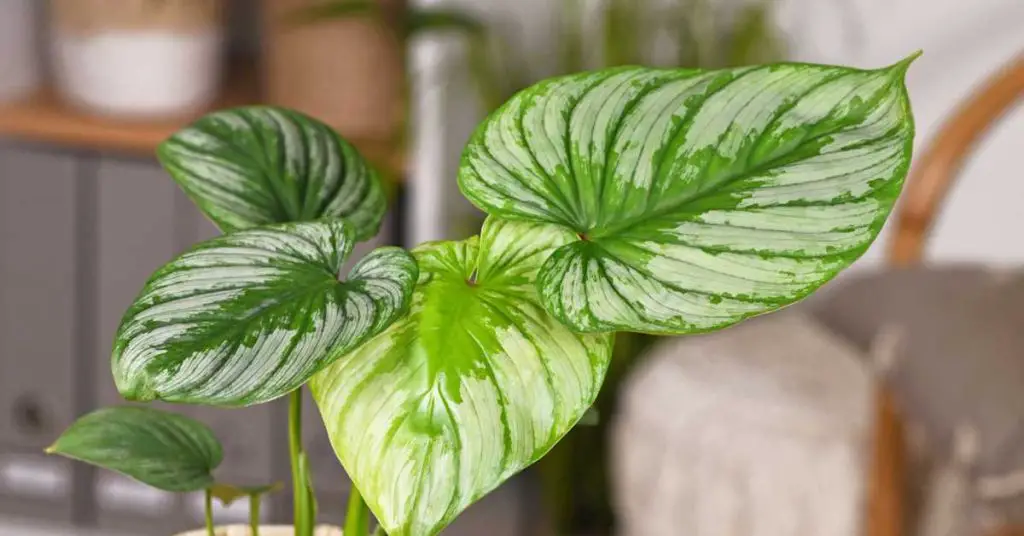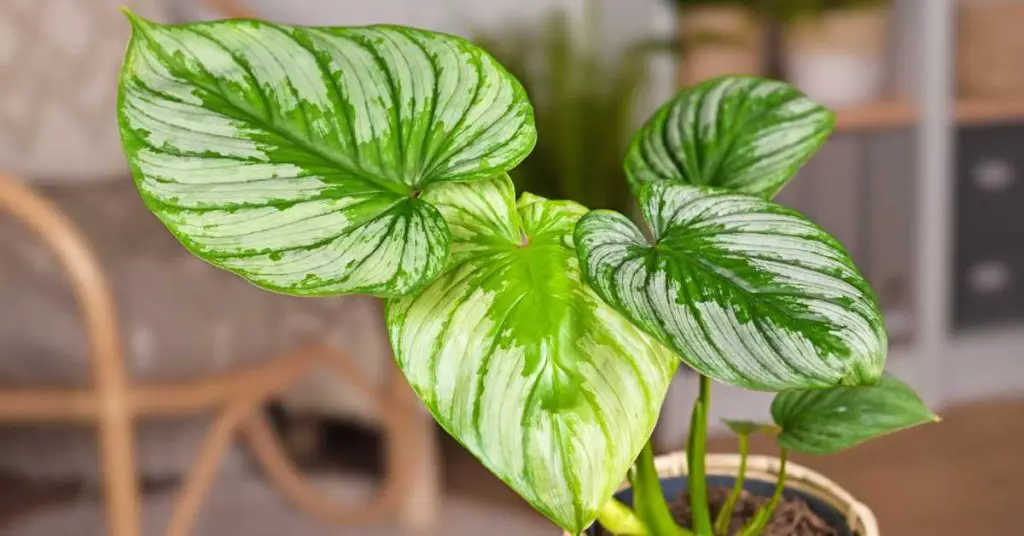Hey there, fellow plant enthusiasts! I’m so excited to share with you everything there is to know about the stunning Philodendron Mamei. This gorgeous tropical plant is a must-have for any indoor plant collection, and I’m here to guide you through all the ins and outs of taking care of this beauty. By the end of this post, you’ll be well-equipped with the knowledge and confidence to help your Philodendron Mamei thrive!
Quick Care Overview
Before we dive into the nitty-gritty, let’s start with a quick overview of the care essentials for your Philodendron Mamei:
| Factor | Requirement |
|---|---|
| Soil | Well-draining, rich soil |
| Light | Bright, indirect light |
| Water | Keep soil consistently moist |
| Temperature | 60-85°F (16-29°C) |
| Humidity | High humidity (60%+) |
| Fertilizer | Balanced liquid fertilizer |
| Propagation | Stem cuttings |
| Toxicity | Toxic to humans and pets |
Now, let’s explore the fascinating history of this plant and learn how to identify it!
Philodendron Mamei History: What are it’s origins?
The Philodendron Mamei hails from the lush tropical rainforests of Central and South America, particularly Ecuador and Colombia. It was first described by French botanist André Bois in 1908, who named the plant after his good friend, Monsieur Mamei. Since its discovery, this philodendron has captured the hearts of plant enthusiasts worldwide with its striking appearance and intriguing growth habits.

Evolution of popularity
Over the years, Philodendron Mamei has grown in popularity among plant collectors, thanks to its stunning foliage and relative ease of care. As more people have discovered the beauty of this plant, demand has increased, making it a highly sought-after specimen in the plant world.
In recent years, social media platforms like Instagram and Pinterest have only further fueled this plant’s fame, with countless photos showcasing its magnificent leaves and adding to its mystique.
Philodendron Mamei Identification
One of the most striking features of the Philodendron Mamei is its large, heart-shaped leaves. These stunning leaves are a deep green color, with a velvety texture and silvery-white variegation. The variegation on each leaf is unique, which only adds to the plant’s charm. When new leaves emerge, they are often a lovely shade of red or pink before maturing to their characteristic deep green.
Philodendron Mamei also has a robust stem and root system, which helps it grow vigorously in its natural habitat. The stems are sturdy, with prominent nodes from which aerial roots emerge. These aerial roots are essential for the plant’s growth, as they help it climb and anchor itself onto trees and other structures in the wild.
Aside from its gorgeous foliage and impressive root system, Philodendron Mamei also boasts some other unique features. Its flowers, though not the main attraction, are quite fascinating. The plant produces a typical philodendron inflorescence called a spathe, which encloses a spike-like structure called a spadix. The spathe is usually green or cream-colored and may have a pleasant fragrance.
Philodendron Mamei Growth Facts
Under the right conditions, Philodendron Mamei is a relatively fast-growing plant. With proper care, including the right balance of light, water, and nutrients, you can expect your Mamei to produce new leaves quite regularly, especially during the warmer months. Keep in mind that growth may slow down or even come to a halt during the winter months, but don’t worry – your plant is just taking a well-deserved break!
Does the Philodendron Mamei grow throughout the year?
Like many tropical plants, Philodendron Mamei experiences most of its growth during the warmer months of the year, typically from spring to early autumn. During this time, you can expect your plant to produce new leaves more frequently and exhibit a more rapid growth rate.
As the temperatures cool and the days shorten, your Mamei may enter a period of dormancy, during which it will grow more slowly or not at all. This is completely normal and a natural part of the plant’s life cycle!
How Big Does a Philodendron Mamei Get?
As mentioned earlier, a Philodendron Mamei can grow up to 6 feet tall in its natural habitat, with leaves as large as 18 inches long. However, when grown indoors, it will usually reach a more modest size of around 3-4 feet tall. The size of your Mamei will depend on several factors, including:
- The age of the plant
- The care it receives (proper light, water, and nutrients)
- The size of its pot and the space it’s given to grow
By providing your Philodendron Mamei with the proper care and environment, you can help it reach its full potential!

Philodendron Mamei Care
Caring for your Philodendron Mamei might seem a bit overwhelming at first, but don’t worry – with a little love and attention, you’ll soon have a thriving, happy plant. Let’s go over each aspect of care in more detail.
Philodendron Mamei Soil
The right soil is essential for the health and growth of your Philodendron Mamei. A well-draining, rich soil is ideal, as it allows the roots to access the necessary nutrients while preventing root rot.
Here’s a simple recipe for the perfect Mamei soil mix:
- 2 parts peat moss or coco coir
- 1 part perlite or pumice
- 1 part orchid bark or aged compost
This mix will provide your plant with the right balance of moisture retention, aeration, and nutrients to help it thrive.
Philodendron Mamei Fertilizer
Feeding your Philodendron Mamei is essential for its growth and overall health. A balanced liquid fertilizer, such as a 20-20-20 formula, is ideal for this plant. Dilute the fertilizer to half strength and apply it every 4-6 weeks during the growing season (spring through early autumn).
During the winter months, when your plant is dormant, you can reduce the frequency of fertilizing or even stop altogether, as your Mamei will not require as many nutrients during this period.
Philodendron Mamei Watering
Watering your Philodendron Mamei correctly is crucial for its health and well-being. These plants love consistently moist soil but are also susceptible to root rot if overwatered. To strike the right balance, water your Mamei when the top inch of soil feels dry to the touch.
Here are a few tips to ensure proper watering:
- Use room temperature water to prevent shocking the plant’s roots
- Water thoroughly, allowing water to drain out of the pot’s drainage holes
- Empty the saucer under the pot after watering to prevent the plant from sitting in standing water
Keep in mind that your Mamei’s watering needs may change depending on the time of year, temperature, and humidity levels. Keep an eye on your plant and adjust your watering schedule as needed.
Philodendron Mamei Light Requirements
Providing your Philodendron Mamei with the right amount of light is key to helping it grow and thrive. These plants prefer bright, indirect light, as direct sunlight can scorch their delicate leaves.
Here are some tips for meeting your Mamei’s light needs:
- Place your plant near a bright window with filtered light (e.g., behind sheer curtains)
- Avoid placing your plant in direct sunlight, especially during the hottest parts of the day
- Rotate your plant every few weeks to ensure even light exposure and growth
If you find that your plant is not getting enough light (e.g., it’s becoming leggy or not producing new leaves), consider supplementing with a grow light to help it get the light it needs.
Philodendron Mamei Temperature & Humidity
Being a tropical plant, Philodendron Mamei loves warm temperatures and high humidity. The ideal temperature range for your Mamei is between 60-85°F (16-29°C). Keep your plant away from drafts, air conditioners, and heating vents, as sudden temperature fluctuations can stress your plant.
High humidity is also essential for your Philodendron Mamei. Aim for humidity levels above 60% to keep your plant happy.
Here are some ways to increase humidity around your Mamei:
- Use a humidifier near your plant
- Place a tray of water with pebbles near your plant (make sure the pot is not sitting in water)
- Group your Mamei with other humidity-loving plants
- Mist your plant with water regularly (make sure to use a fine mist and avoid soaking the leaves)
Repotting Philodendron Mamei
Your Philodendron Mamei will likely need to be repotted every 1-2 years, depending on its growth rate. Signs that it’s time to repot include:
- Roots growing out of the drainage holes
- Water not draining properly, or sitting on top of the soil
- A noticeable decrease in growth or overall health
The best time to repot your Mamei is in early spring, just before its active growing season begins.
How to choose the correct pot and soil for the Philodendron Mamei
When repotting your Philodendron Mamei, choose a pot that is 1-2 inches larger in diameter than the current pot. Make sure the new pot has drainage holes to prevent root rot. As for soil, use the same well-draining, rich soil mix mentioned earlier in this post.
How to repot your Philodendron Mamei:
To repot your Philodendron Mamei, follow these steps:
- Gently remove your Mamei from its current pot, being careful not to damage the roots
- Inspect the root system for any signs of rot or damage, and trim away any unhealthy roots
- Fill the new pot with a layer of fresh soil mix, leaving enough space for the root ball
- Place your Mamei in the new pot, positioning it so that the top of the root ball is slightly below the pot’s rim
- Add more soil mix around the root ball, gently pressing it down to eliminate air pockets
- Water your plant thoroughly to help the soil settle and establish good contact with the roots
- Place your newly repotted Mamei back in its preferred spot, and resume its regular care routine

Philodendron Mamei Maintenance & Pruning
While Philodendron Mamei doesn’t require much pruning, some occasional maintenance can help keep your plant looking its best and encourage healthy growth.
Over time, some of your Mamei’s leaves may become damaged or die off. It’s essential to remove these leaves to prevent disease and allow the plant to focus its energy on new growth. To remove a dead or damaged leaf, use a clean, sharp pair of scissors or pruning shears and cut the leaf stem close to the main stem. Be sure to sterilize your cutting tool before and after use to prevent the spread of disease.
If you find that your Philodendron Mamei is becoming too leggy or you’d like to encourage bushier growth, you can lightly prune the plant. To do this, simply trim back the tips of the stems, cutting just above a leaf node. This will encourage your Mamei to produce new growth from the node, resulting in a bushier appearance.
Philodendron Mamei Propagation
Propagating your Philodendron Mamei is a fun and rewarding way to grow new plants, either for yourself or to share with friends and family. The easiest and most successful method of propagation for Mamei is stem cuttings.
Stem cuttings propagation
- Select a healthy stem with at least two leaves and a visible node
- Using a clean, sharp pair of scissors or pruning shears, cut the stem just below the node
- Remove the bottom leaf, leaving only one leaf on the cutting
- Place the cutting in a jar of water, ensuring the node is submerged but the remaining leaf is not touching the water
- Place the jar in a bright, warm location with indirect light
- Change the water every few days to prevent bacterial growth
- After a few weeks, roots should begin to form at the node. Once the roots are a few inches long, you can plant your cutting in a pot with the appropriate soil mix
Philodendron Mamei Toxicity
Toxicity to Humans
While Philodendron Mamei is a stunning addition to any plant collection, it’s important to note that it is toxic to humans if ingested. The plant contains calcium oxalate crystals, which can cause irritation, swelling, and difficulty swallowing. Keep your Mamei out of reach of curious children and educate family members about its toxicity.
Toxicity to Cats & Dogs
Philodendron Mamei is also toxic to cats and dogs, with symptoms similar to those in humans. If you suspect your pet has ingested part of the plant, contact your veterinarian immediately.
Philodendron Mamei Problems
Philodendron Mamei Leaves Turning Yellow
Yellow leaves on your Philodendron Mamei can indicate a few potential issues, including:
- Overwatering
- Underwatering
- Lack of nutrients
- Poor light conditions
To determine the cause of yellowing leaves, review your care routine and check for any discrepancies. Adjust your watering schedule, fertilizing regimen, or light conditions as needed to help your plant regain its health.
Philodendron Mamei Leaves Curling
Curling leaves on your Philodendron Mamei can be a sign of underwatering or low humidity. If the soil is too dry, increase your watering frequency to ensure the plant is receiving enough moisture. If humidity is the issue, try using a humidifier, pebble tray, or regularly misting the plant to increase the moisture in the air around your Mamei.
Pests
Like any indoor plant, Philodendron Mamei can be susceptible to pests such as spider mites, aphids, and mealybugs. Regularly inspect your plant for signs of pests and take action to treat them as soon as possible to prevent further damage. Some common methods for treating pests include:
- Insecticidal soap or neem oil
- Removing pests with a damp cloth or cotton swab
- Introducing beneficial insects, such as ladybugs or lacewings
Final Thoughts
There you have it – the ultimate guide to Philodendron Mamei care, growth, and more! Armed with this knowledge, you’re now ready to help your Mamei thrive and become the star of your indoor plant collection. Remember to be patient and attentive to your plant’s needs, and it will reward you with stunning foliage and robust growth for years to come.
Happy planting, my fellow green thumbs!





